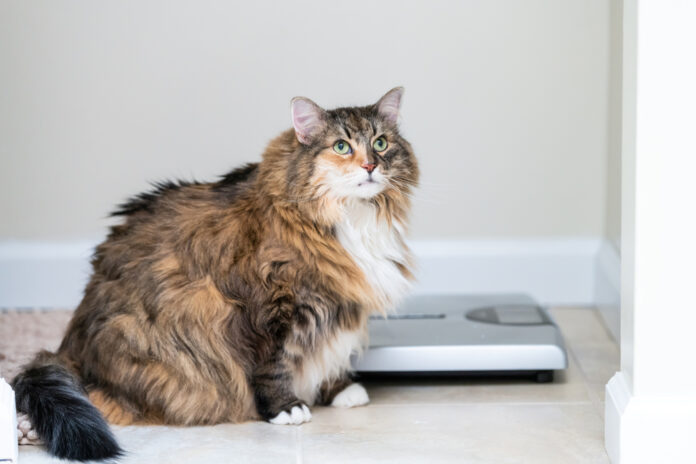Feline dental health made simple

Cats seem prone to problems with their teeth and gums. Here’s how to help prevent these painful dental conditions.
Does your cat have bad breath? Are his teeth brown, and his gums red? Does he drool, paw at his mouth or have difficulty eating or chewing? Is you answered “yes” to these questions, you need to address his dental health as soon as possible.
Up to 85% of cats aged three or older have some degree of dental disease. It starts as a buildup of plaque and tartar (that yellowish brown coating you might see on his teeth when he yawns), and can eventually lead to full-blown periodontal disease, complete with inflamed gums, infected and abscessed teeth, foul breath, tooth loss, and even systemic diseases of the heart and kidneys.
Left untreated, periodontal disease can cause your cat a lot of pain and discomfort, and may even shorten his lifespan.
/* custom css */
.tdi_15.td-a-rec{
text-align: center;
}.tdi_15 .td-element-style{
z-index: -1;
}.tdi_15.td-a-rec-img{
text-align: left;
}.tdi_15.td-a-rec-img img{
margin: 0 auto 0 0;
}@media (max-width: 767px) {
.tdi_15.td-a-rec-img {
text-align: center;
}
}
1. Look at what he’s eating
The main cause of periodontal disease is poor diet – more specifically, low quality dry foods high in empty carbs, fillers and additives. A lot of people feed their cats commercial kibbles because they’ve been led to believe that these hard crunchy foods are keeping their kitties’ teeth clean.
Ironically, nothing could be further from the truth. Poor quality dry foods simply don’t offer the cat enough sustained chewing action to remove plaque, and when the kibble pieces have been softened by saliva, they can get stuck between the teeth and actually increase the risk of dental problems.
What to do: One of the best ways to help prevent dental disease in your cat is feed him a high quality diet rich in whole muscle and organ meats, with some raw (never cooked) chicken necks or backs, all of which encourage the kind of chewing that helps keep teeth clean.
The food should contain no or minimal grains and also offer some fresh veggies and other nutritious ingredients such as Omega-3s, herbs, etc. Avoid products with fillers, additives and unnamed meats, and those that contain more grain than meat. Supplements such as digestive enzymes and probiotics may also help (the mouth is part of the digestive system after all).
For treats, try him on small chunks of raw meat, and/or see if he’ll chew on a piece of raw broccoli or carrot. Cats that enjoy snacking on raw veggies aren’t common, but they do exist. You can also buy freeze-fried and dehydrated treats made from real meat – just make sure their ingredients are domestically sourced. Read labels carefully — the fewer and more natural the ingredients, the better.
2. Give him adequate dental care

If your cat has any sign of dental problems, take him to the veterinarian as soon as possible for a professional cleaning. Even if he doesn’t have any oral symptoms, it’s still important for him to see the vet once a year for a checkup, to catch any developing issues before they become painful and problematic.
Some people balk at the idea of having their cats’ teeth cleaned, because it usually means anesthesia. But it’s better than leaving the cat to suffer. Try not to put it off, even if you think it’s not really necessary. It’s far easier on the cat (and less expensive for you) to have your kitty’s teeth cleaned when the veterinarian recommends it, rather than wait until the problem is so advanced that he needs surgery or extractions.
Your veterinarian will probably also advise a home dental care regime to help keep on top of your cat’s oral health between checkups. This regime will most likely include daily tooth brushing.
What to do: Your first thought might be that there’s no way your cat will let you brush his teeth. It’s true that some cats won’t let you put your fingers in their mouths, but don’t dismiss the idea without at least trying. It is best if you can start the cat from kittenhood to get used to having his mouth handled and his teeth brushed.
- Carefully open the cat’s mouth, put one finger inside, and gently rub it along his teeth and gums. Be calm while you’re doing this, and don’t get impatient or angry if he starts to pull away. Just quietly stop what you’re doing and try again another time.
- If your cat gets to the point where he doesn’t mind having his mouth opened and his teeth and gums touched, be sure to give him a highly-valued treat immediately after each session.
- Cleaning should be done with a brush designed specifically for animals, or else use a finger glove. Be sure to clean around each tooth, on both sides. Never use human toothpaste – we might like that strong, fresh minty flavor, but it’s too overpowering for cats. Animal toothpastes are formulated to be tasty and palatable to them, and help make brushing a more pleasant experience.
- If your cat refuses to have his teeth brushed, no matter how much you try, don’t despair. Several natural products are formulated to clean an animal’s teeth without having to use a brush at all. These easy-to-use sprays and gels can often just be added to his water bowl, although others require direct application to the oral cavity.
As you can see, caring for your cat’s dental health isn’t rocket science. A proper diet, along with regular dental care, will go a long way to keeping his teeth white and his gums healthy.
/* custom css */
.tdi_16.td-a-rec{
text-align: center;
}.tdi_16 .td-element-style{
z-index: -1;
}.tdi_16.td-a-rec-img{
text-align: left;
}.tdi_16.td-a-rec-img img{
margin: 0 auto 0 0;
}@media (max-width: 767px) {
.tdi_16.td-a-rec-img {
text-align: center;
}
}




